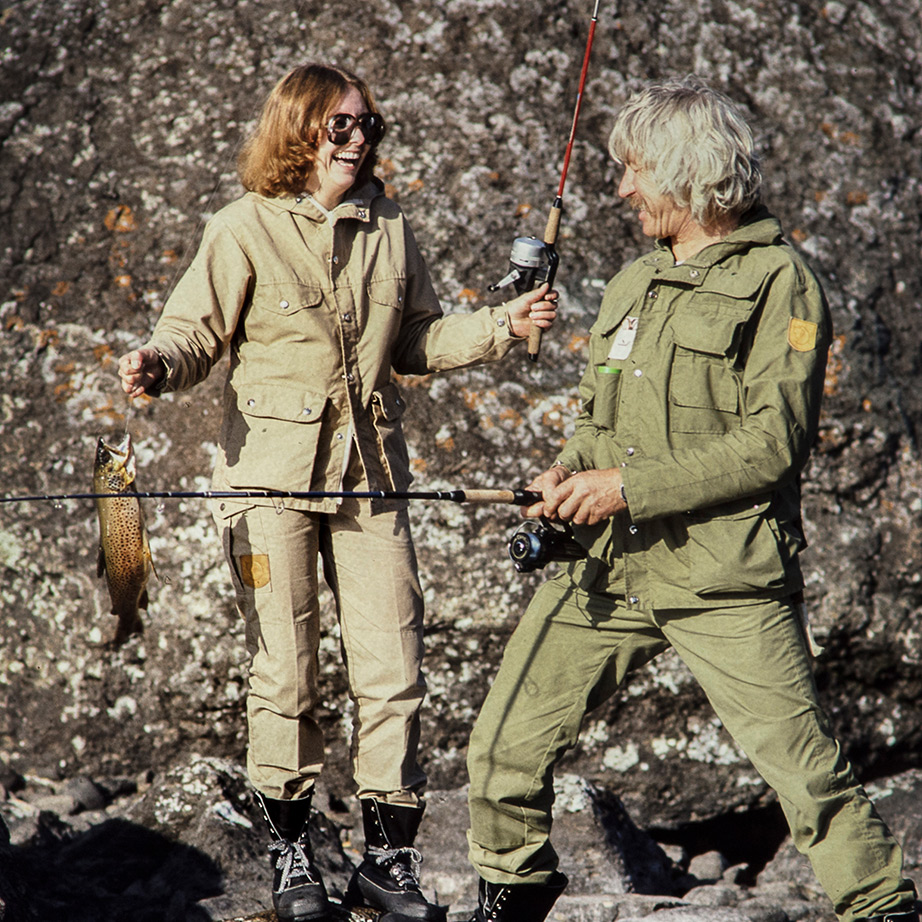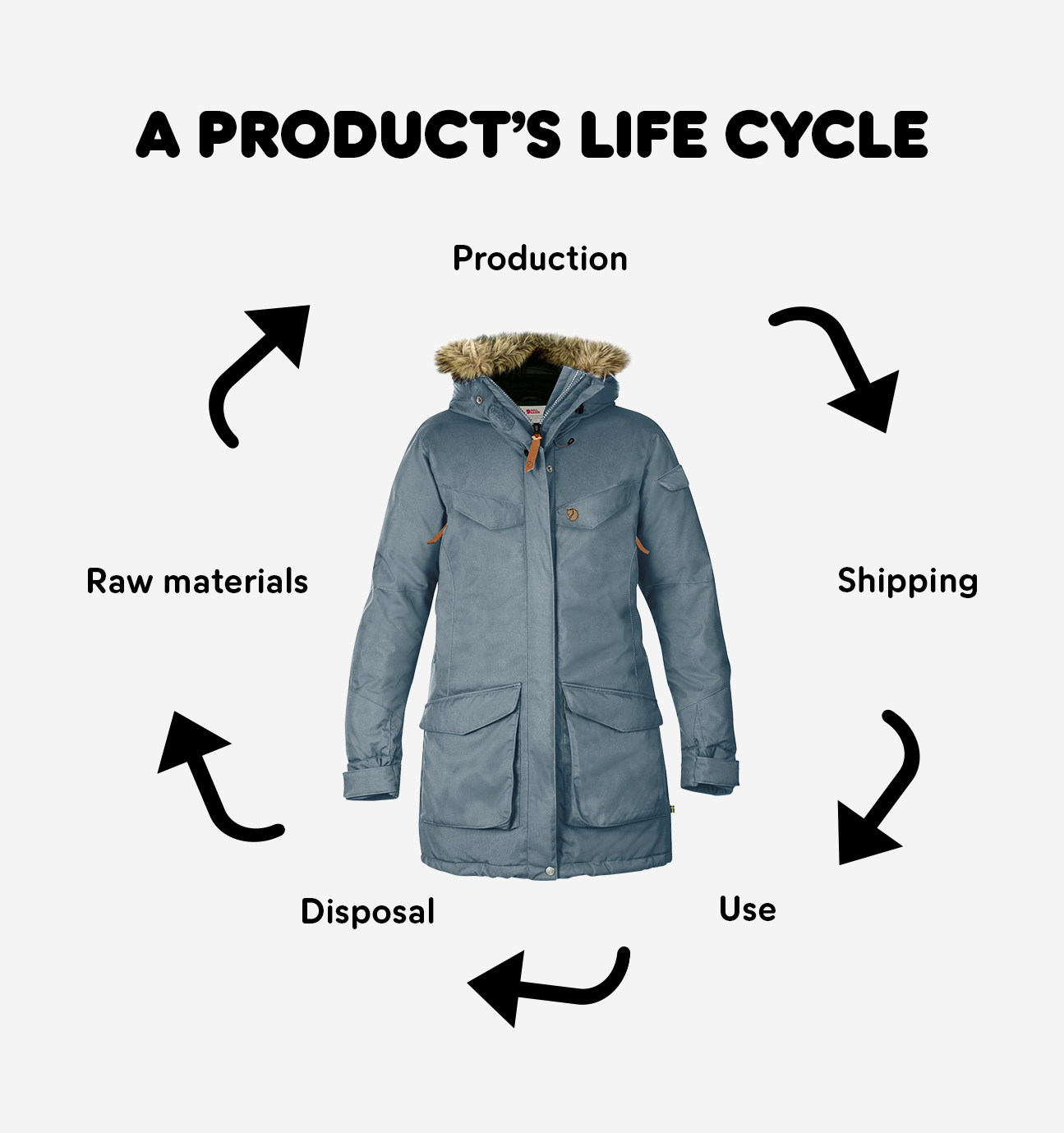The life cycle of a product
We need to work together to reduce our products' environmental footprints.
Every action has a reaction. Everywhere we go and everything we do leaves an Every action has a reaction. Every action comes with consequences, side effects, or repercussions. This is particularly true when talking about our impact as human beings on the natural world around us. Every one of us has an environmental footprint, explains Johanna Mollberg, Fjällräven’s Sustainabile Materials Manager.
Every one of us has an environmental footprint
Johanna Mollberg
Sustainable Materials Manager
We use this a lot when talking about products. The size of that environmental footprint depends on the resources we’ve taken out and the emissions released when producing and shipping it. And you can take this data and calculate whether that product leaves a large or small footprint. We can look at reducing aspects of this footprint in how and where we produce. But a big part of this footprint depends on how the product is used. The footprint is based on the product’s entire life cycle. So if you continue using it, the per-use footprint is reduced. If you have a product for many years rather than one or two seasons, this can make a huge difference. It also means you’re less likely to buy another similar product and create another, new footprint.
Data on our environmental shoe-sizes, so to speak, form the basis of our design roadmap at Fjällräven. And we have two key things that guide our way. The first is durability. “We choose materials that last and design constructions that can easily be repaired. This way we hope our products can physically last a long time.”
But there is another aspect that we take very seriously, despite it being harder to measure. “The other aspect is emotional longevity,” explains Johanna. “There’s no point creating a durable jacket if people don’t want to use it for a long time. so we try to make things as timeless and comfortable as possible.”
But as Johanna goes onto explain, this part is almost impossible to know for sure that we’re getting right. “We can test a material’s durability in the lab. But how can we know that people will still want to wear Keb Eco-Shell Jackets in 5, 10, 15 years from now? It depends on so many factors. We got lucky with the Greenland Jacket. It’s become a timeless classic. But we can only say this for sure because time has passed.”

We’re doing our best on this part. And so far we’ve had some pretty good feedback. So many of you send in your images of old Kånkens, Greenland Jackets, Räven Jackets, Thermo Tents and so on. But only time will tell if our new products, like Abisko Midsummer trousers are just as ‘timeless’ in 40 years’ time.

But you as the wearer also have control of the life cycles of your clothes. You can decide how long you use them for – how many adventures into nature they go on. You can decide whether to repair a tear or replace a lost button rather than buying a new product. You can decide how often you wash that jacket and air that tent. Something that has a really big impact on the durability of a product and your own impact on the environment, is how much you wash it. We tend to wash our clothes way too often. My main piece of advice is to wash less. Air things instead; if you do notice a little mark or stain, hand wash just that part and if you do need to use the washing machine choose the right wash, use the correct detergent and don’t under or overfill the drum.
Johanna also advises storing seasonal items correctly, aware from sunlight and air and in dry conditions. Our care and repair team also suggests fixing tears as soon as possible using a patch and replacing broken zippers and buttons yourself.
But what about at the very end of a product’s life, when it can’t be given away to someone else, when it really is on its last legs. “Right now that’s tricky,” says Johanna. “I’m hoping that in the future there will be a centralised solution for recycling clothes like there is for glass and cardboard. But some companies can help already. They can reuse the parts of your gear that are still ok to create new or repair old products.”
We’re in this together and we are looking for ways to ensure our products stand the test of time, both physically and emotionally. But a big part of your clothes’ life cycle is in your hands. You can reduce your environmental footprint by reusing, repairing and recycling. Together, we can make a difference.
More Stories
Sustainability

